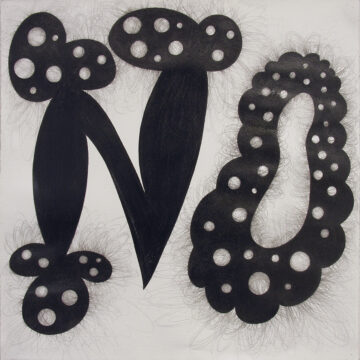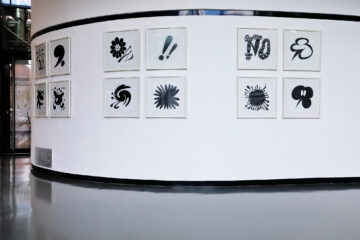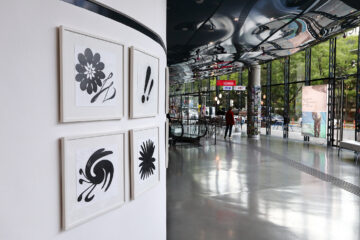by Andrea Scrima
#1: SAYING NO

In the talk Judith Butler gave upon receiving the Adorno Prize in 2012, she asks: “Can one lead a good life in a bad life?” Her question springs from a conclusion Theodor W. Adorno formulated in Minima Moralia: “Wrong life cannot be lived rightly” (“Es gibt kein richtiges Leben im falschen”). Years later, he speculated whether modern humans were already too damaged to live in a right world, should such a world ever come into being. Butler nonetheless asks if it’s morally permissible to “wish simply to live a good life in the midst of a bad life,” but concedes that it’s not so simple. It would seem that to pursue the “good” life, one must reject the “bad” life and everything it demands from us. Yet isn’t the term “the good life” already far too tainted by consumerism to be of any real use?
Let’s speak instead of a “true life” as opposed to a “false life.” But what is the nature of this undertaking, and what would the true life entail? The fact that we are interdependent and vulnerable beings presupposes a set of conditions required for even a minimally decent life: food, shelter, clothing, a halfway functioning society, some kind of livelihood. Butler reminds us of Hannah Arendt’s observation that it’s not enough to be alive, to merely survive—that for a life to be considered a life, it has to be lived with meaning and purpose.
Thus, our demand must be not merely for life, but for a liveable life. And yet our lives are not entirely in our hands; they are subject to political and economic structures that rob individuals and entire peoples of their agency and doom them to precarity, and often worse. In Problems of Moral Philosophy, Butler reminds us, Adorno asks “how the broader operations of power and domination enter into, or disrupt, our individual reflections on how best to live.” Adorno’s reasoning arrives at the necessity of resistance: “Even the simplest demand for integrity and decency must necessarily lead almost everyone to protest.” This includes the necessity of saying no to “those parts of us that are tempted to join in” and become complicit. But what can this “no” consist in? What will it cost us, and who will hear it?
#2: SPEECH BUBBLES

In an essay from the year 2000 titled “NewLiberalSpeak: Notes on the New Planetary Vulgate,” Pierre Bourdieu and Loïc Wacquant described a strange new terminology that had replaced concepts such as “capitalism,” “domination,” “class,” “exploitation,” and “inequality” with their neoliberal doppelgangers “globalization,” “flexibility,” “new economy,” “employability,” and “modernization,” rendering a centuries-long history of social and economic struggle obsolete. The global spread of these ideas had obscured their purpose so thoroughly that they were taken to be common sense, a kind of “natural necessity.” In reality, however, their ubiquity served to mask an agenda: the dismantling of the social state and the world of precarious wage labor and financial insecurity that would inevitably result.
The abuse of language as a form of “symbolic violence” extends from the economic to the political sphere. Words are weaponized in various ways, e.g., they cloak an underlying objective in a seemingly more benign set of goals: a military campaign’s plan to seize and solidify power is transformed into “bestowing” or “protecting democracy”; the abolition of financial regulation, social welfare, and other governmental protections the expression of individual “freedom.” Another way to distort, manipulate, and hollow out the meaning of words is by means of incessant repetition, through which catchwords and slogans permeate the subconscious and disable discourse. Or they are replaced with their opposites: armed aggression becomes a “peace-keeping mission”; the word “truth” has come to mean a belief in delusional conspiracies; legitimate journalism is henceforth known as “fake news.” No contradiction is too blatant: in the context of the Trump campaign, “Stop the Steal” and “The Big Lie” went viral not despite, but because of the very infantilization of the language used.
Victor Klemperer meticulously recorded the degradation of language in the Third Reich, the “tiny doses of arsenic” that corroded the fabric of collective experience. Insidiously, language deteriorated into something coarse and brutal incapable of conveying critical thought. Its grammar was imbued with a fanaticism that fed the fantasies of resentment and revenge, allowing people to enthusiastically, often ecstatically, embrace their basest, ugliest thoughts.
If parallels to the present time—i.e., the suspension of individual responsibility and the normalization of dehumanization—are evident, what does this mean and where does it take us?
#3: COMPASSION

Our minds are trained on news cycles calibrated, in a never-ending feedback loop, to attention spans that have shortened considerably; it is difficult to sustain a moral position in the long term. Some decide to abstain from the news in the interest of “self-care,” while “compassion fatigue” or “empathic distress fatigue” has become the subject of serious study. Indeed, the term “empathy” seems more accurate when describing the physiological trait by which we experience the suffering of others through the same subgroups of neurons firing in the brains of those afflicted—when our bodies actually feel a physical echo of another person’s pain—while “compassion” becomes a conscious moral decision on the part of the observer. Either way, a moment seems to arrive when people cease to identify with the suffering individual, when morality breaks down and a fear for their own fate replaces concern for those experiencing danger directly, when—somewhat farther down the path of desensitization—a desire to help eventually gives way to an overwhelming sense of powerlessness, and eventually boredom and cynicism. As Susan Sontag observed in Regarding the Pain of Others, “compassion is an unstable emotion. It needs to be translated into action, or it withers.” Although our horror at distressing events fed to us through the media diminishes over time, and we find ourselves grappling with the moral dimensions of this phenomenon, for the individuals directly affected, the reality of what is happening to them remains, independently of our perception—or the recognition of our own implication in the injustice being perpetrated on them—just as immediate, dire, and deserving of our urgent attention and action. As Sontag explains, we need “to set aside the sympathy we extend to others beset by war and murderous politics for a reflection on how our privileges are located on the same map as their suffering, and may—in ways we might prefer not to imagine—be linked to their suffering [. . .].”
#6: SPLAT

For those of us who have neither committed, nor witnessed, nor been the victim of a violent crime, our understanding of violence essentially occurs through mass media. Staring at our screens, we contemplate the broken bodies of people dug out of the rubble in cities destroyed by earthquakes or bombs; we click our way through warnings of “graphic content,” peer at grainy footage of distant human figures being targeted and killed—but do we imagine the effects of these events on our own fragile bodies? What does it mean to view acts of violence or cruelty from the safety of our homes?
Blood and gore are an inevitable part of the entertainment we consume; as a matter of course, our films and TV series show us characters in close-up as they are shot, stabbed, choked, or maimed. Do we recoil at the sight, or are we too inured? As children, we giggled at cartoons of animated figures being blown up, electrocuted, consumed in flames, smashed by falling boulders, hurled off cliffs, rocketed into space, crushed under grand pianos, hit by trucks and trains; they were funny scenes lacking in realistic detail. We watch our beloved cartoon heroes get squashed flat, and then—bloop!—pop back into their original shapes. Or they’re burnt to a crisp, only to reappear unscathed in the next episode. Paired with a comedic storyline, it all seemed harmless and playful; on another level, however, the hilarity—the element of repetitive slapstick—reinforces the brutality.

With the transition to the hyperviolence portrayed in video games, and particularly first-person shooter scenarios, the connection to acts of real-life violence committed by minors, for instance school shootings, comes under scrutiny. Have the simulations affected their ability to tell fact from fiction? Another, parallel question emerges: to what degree do these spectacles of violent death act as a conduit for natural impulses? Blam! Pow! Kaboom! Zap! We laugh at the ridiculous spectacle of the poor sucker who had it coming. There’s always an element of regression, of Schadenfreude, of psychic tension: it turns out that something ugly lies hidden beneath the cartoon’s whimsical surface.
This is the contradiction we inhabit: the cute, snuggly, teddy-bear world adults carefully construct to protect their children belies the emotional drama, struggle, and cruelty of childhood. The battles of early psychosexual development manifest in the animated squirt, splat, spill, and drip of blood and other bodily fluids: emotionally charged shapes that channel early impulses and, encoded in the seemingly innocuous visual vocabulary of the comic and cartoon, live on in psychic suspension.
—To be continued.
For the past ten years, Andrea Scrima has been working on a group of drawings entitled LOOPY LOONIES. The result is a visual vocabulary of splats, speech bubbles, animated letters, and other anthropomorphized figures that take contemporary comic and cartoon images and the violence imbedded in them as their point of departure.
Against the backdrop of world political events of the past several years—war, pandemic, the ever-widening divisions in society—the drawings spell out words such as NO (an expression of dissent), EWWW (an expression of disgust), OWWW (an expression of pain), or EEEK (an expression of fear). The morally critical aspects of Scrima’s literary work take a new turn in her art and vice versa: a loss of words is countered first with visual and then with linguistic means. Out of this encounter, a series of texts ensued that explore topics such as the abuse of language, the difference between compassion and empathy, and the nature of moral contempt and disgust.
In May and June of 2024, several work groups from the LOOPY LOONIES series were exhibited at Kunsthaus Graz, Museum Joanneum, Austria, accompanied by postcards containing excerpts from these texts. Scrima read from these texts in a lecture/performance on May 15, 2024.
